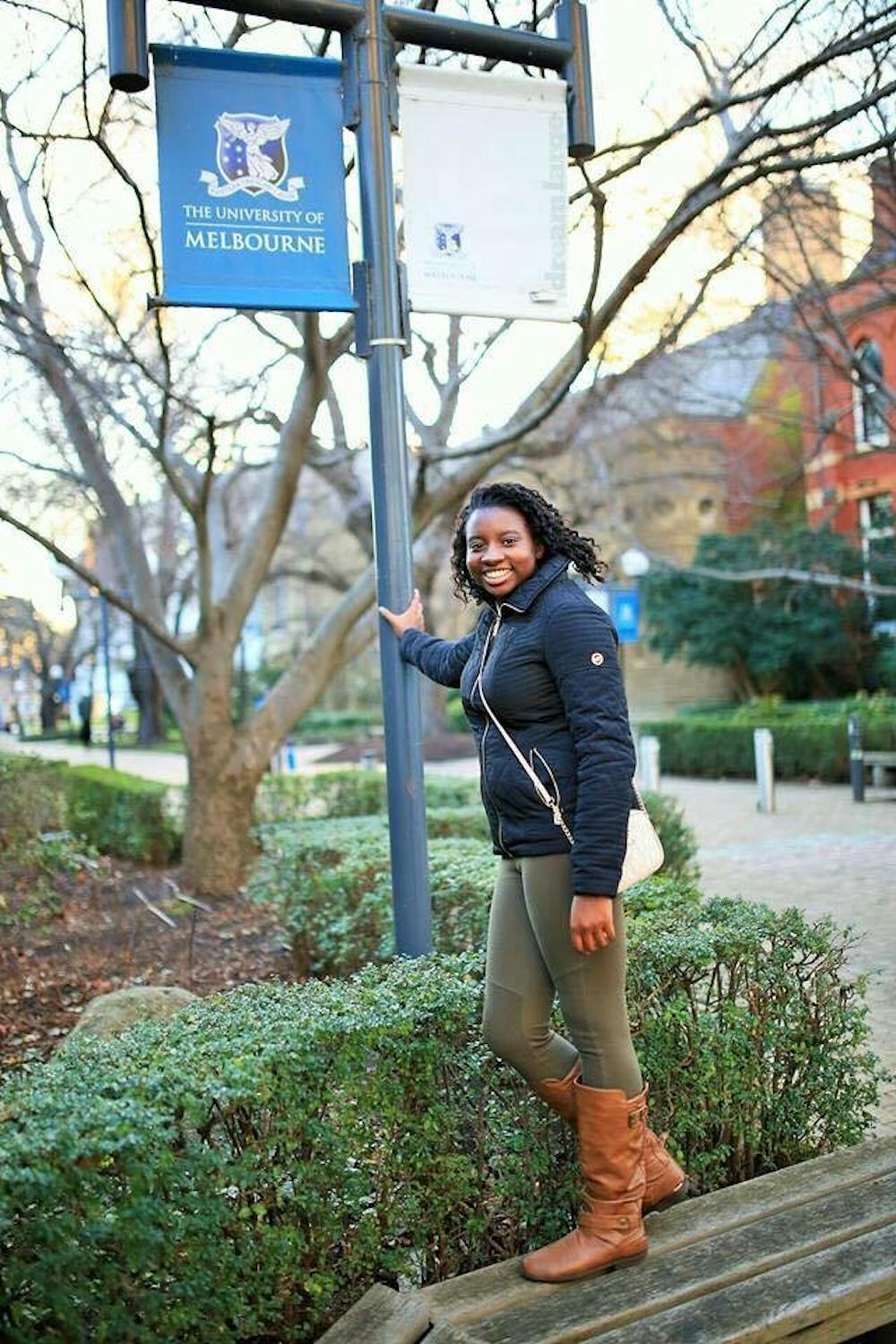AU students are on the go year-round, and that only intensifies as the temperature gets warmer and the spring semester ends. From political conventions in California to volunteer trips in South America and beyond, summer takes students away from AU and into the world around them. This summer, the Eagle is launching a summer series chronicling their adventures. Join us in our new weekly series on how students are spending their summers #AwayFromTheNest before they return to campus in the fall.
Rising senior Autumn Clarke’s interest in Australia didn’t end when she returned home from her fall 2015 semester abroad in Melbourne. This summer, she’s interning at the country’s embassy here in D.C., researching policies and creating briefs to send to Australian government officials. As a political science major concentrating on policy, Clarke’s internship offers her hands on experience with the inner workings of the Australian government. Clarke spoke to The Eagle about her time in Australia, her current role as an intern and her future goals of working with higher education policy.
Eagle: As an intern at the Embassy of Australia, what does your job involve?
AC: I help facilitate policy dialogue between the government of Australia and the governments of the U.S. and Canada as a means to share best practices and lessons learnt for future policy development and encourage future collaboration. I monitor (research) and analyze policy and regulatory developments in the U.S. and Canada across education, science and technology and industry (including the energy and resources sector), reporting its findings to the Australian Government and key stakeholders. I also engage with education and research institutions to promote Australian capabilities, encourage collaboration and increase academic and research mobility between Australia and the U.S.
The purpose of the office I work in, The Branch of Industry, Science, and Education, is to strengthen the relationship between the U.S. and Australia on science, innovation, and education research. So part of that is being well informed about what is going on in each country and finding opportunities to learn from one another. I monitor (as in research) U.S. federal policies on various topics, but that activity isn’t always specific to long-term research. Once I’ve compiled some research, I help draft it into a cable, which is like a formal diplomatic memo that gets sent to the government in Australia.
On the education side, I have researched what actions the U.S. has done to help grow STEM education among early learners and on the science side I have researched advancements in the maker movement, manufacturing, and technology and organizations that support them such as the National Network for Manufacturing Innovation (NNMI) Institutes grant competition to find advanced manufacturing processes.
Eagle: What originally made you interested in working for the Embassy of Australia?
AC: During the fall semester of 2015 I actually did a study abroad program at the University of Melbourne, and then as I was looking for summer internships I came across this internship for the embassy and their branch of industry, science and education, which was right up my field because I really want to do education policy, so I got to use my study abroad experience to help set up my internship. And that’s why I was really interested.
Eagle: How was your experience during your study abroad in Australia and how did it compare to your experience at AU?
AC: One of my favorite parts was actually the education part. Studying under the Australian education system was very different from the U.S. education system. Their classes are taught mostly by PhD candidates in little breakout sessions, and there’s less busy work as AU gives. There’s usually just a midterm and a final or two papers for the overall semester. It’s more relaxing and there’s more emphasis on you knowing the actual material rather than having constant exams.
Eagle: What would you say is your favorite part of working at the Embassy of Australia?
AC: It’s definitely been a learning experience for me. My branch is split up into two little offices. One for education and one for science and industry, and I’m already very interested in education, so I’ve gotten to learn a lot more about science policy and actually how those two fields connect. So getting to see how these different sectors intertwine has been my favorite part, getting that experience.
Eagle: What are people's reactions when you tell them that you’re interning at an embassy?
AC: When I told my family and friends that I got an internship at the Australian Embassy, they were like really shocked. I mean I’m thinking that it’s a pretty competitive internship, or any embassy internship is pretty competitive, so a lot of people are definitely shocked and amazed that I got it. Or not the fact that I got it, but the fact that I’m interning at the embassy. It’s seen as a big accomplishment, definitely at least for me.
Eagle: During this past year you interned at the U.S. Department of Education. Do you think what you learned there translates over to your current internship at the Australian embassy?
AC: Definitely because a lot of it is federal policy, and there I learned how to analyze policy initiatives and how to translate the benefits and the downsides of those policies, so I get to use that and translate it into my job role here now, which is pretty much that.
Eagle: You said that you want to possibly concentrate on policy in higher education. Are there any current policies that you would like to change in the future?
AC: I think having schools funded by local taxes is a huge problem. This is a problem because property tax varies across district and state lines. The higher the property tax rate, the more money a school district gets. Meaning that poorer areas have less funding for schools because property taxes are generally lower in these areas. This causes a ton of problems for schools and can lead to limited resources, inadequate amounts of school supplies for students (i.e. computers, new textbooks, & art and music classes), and the inability to retain high quality teachers. Close to all schools receive some type of federal funding, however in a lot of lower socioeconomic school districts, it is still not enough.





